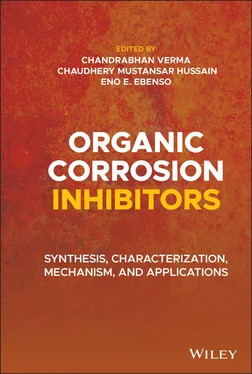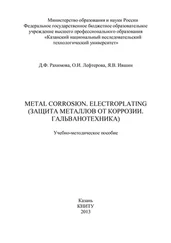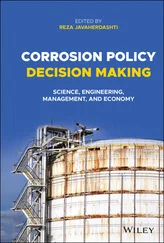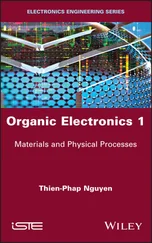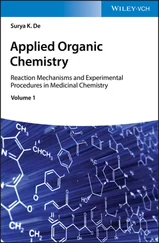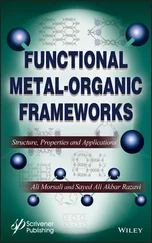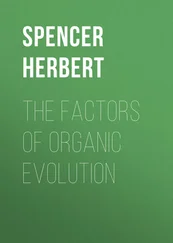1 ...7 8 9 11 12 13 ...25 1 1 Van Delinder, L.S. and deS, A. (1984). Brasunas, Corrosion basics: An introduction. Houston, TX: NACE.
2 2 ISO 8044:1999 (2000). Corrosion of metals and alloys ‐ Basic terms and definitions. Brussels: International Organization for Standardization.
3 3 Veronika, K.B. (2008). Knowledge about metals in the first century. Korroz. Figy. 48: 133–137.
4 4 Fontana, M.G. (1986). Corrosion Engineering, 3rde. New York: McGraw‐Hill.
5 5 Uhlig, H.H. (1949). The cost of corrosion in United States. Chem. Eng. News. 27: 2764–2767.
6 6 Bennet, L.H., Kruger, J., Parker, R.I. et al. (1978). Economic effects of metallic corrosion in the united states. Washington, DC: National bureau of standards (Special Publication).
7 7 Koch, G.H., Brongers, M.P.H., Thompson, N.G. et al. (2002). Corrosion costs and preventive strategies in the united states. Mater. Perform. (Supplement). 42: 3–11.
8 8 Wei, H., Wang, Y., Guo, J. et al. (2015). Advanced micro/nanocapsules for self‐healing smart anticorrosion coatings. J. Mater. Chem. A. 3: 469–480.
9 9 Haque, J., Srivastava, V., Verma, C., and Quraishi, M.A. (2016). Experimental and quantum chemical analysis of 2‐amino‐3‐((4‐((S)‐2‐amino‐2‐carboxyethyl)‐ 1H‐imidazol‐2‐yl)thio) propionic acid as new and green corrosion inhibitor for mild steel in 1 M hydrochloric acid solutions. J. Mol. Liq. 225: 848–855.
10 10 Engineering 360 powered by Global Spec, 2016, Annual Global Cost of Corrosion: $2.5 Trillion. http://insights.globalspec.com/article/2340/annual‐global‐cost‐of‐corrosion‐2‐5 trillion.
11 11 Bhaskaran, R., Bhalla, L., Rahman, A. et al. (2014). An analysis of the updated cost of corrosion in India. Mater. Perform. 53: 56–65.
12 12 International Measures of Prevention, Application, and Economics of Corrosion Technologies Study (2016). Report No. OAPUS310GKOCH (PP110272)‐1 Report prepared by DNV GL U.S.A., Dublin, Ohio and APQC, Houston, TX.
13 13 Roberge, P.R. (2008). Corrosion engineering principles and practice. New York: McGraw‐Hill.
14 14 Leygraf, C., Wallinder, I.O., Tidblad, J., and Graedel, T. (2000). Atmospheric Corrosion, 2nde. New York: John Wiley & Sons.
15 15 Burstein, G.T., Liu, C., Souto, R.M., and Vines, S.P. (2004). Origin of pitting corrosion. Corros. Eng. Sci. Technol. 39: 25–30.
16 16 Deshpande, K.B. (2010). Experimental investigation of galvanic corrosion: comparison between SVET and immersion techniques. Corros. Sci. 52: 2819–2826.
17 17 Tada, E., Sugawara, K., and Kaneko, H. (2003). Distribution of pH during galvanic corrosion of a Zn/steel couple. Electrochim. Acta. 49: 1019–1026.
18 18 Souto, R.M., Gonzalez‐Garcia, Y., Bastos, A.C., and Simoes, A.M. (2007). Investigating corrosion processes in the micrometric range: a SVET study of the galvanic corrosion of zinc coupled with iron. Corros. Sci. 49: 4568–4580.
19 19 Sedriks, J. (1990). Corrosion testing made easy: Stress corrosion cracking test methods. Houston: NACE.
20 20 Turnbull, A. (1992). Test methods for environment assisted cracking. Br. Corros. J. 27: 271–289.
21 21 Cherepakhova, G.L., Shreider, A.V., and Charikova, G.P. (1970). Use of galvanized carbon steel tubes in equipment for condensing and cooling. Chem. Pet. Eng. 6: 490–492.
22 22 Martin, J.H. (2006). Concise encyclopedia of the structure of materials, 1ste. Elsevier.
23 23 Erbing Falkland, M.L. (2000). Duplex stainless steels. In: Uhlig’s Corrosion Handbook, 2ee (ed. R. Winston). New York: Wiley.
24 24 Grubb, J.F., DeBold, T., and Fritz, J.D. (2005). Corrosion of Wrought Stainless Steels. In: Corrosion: Materials, ASM Handbook, vol. 13B (eds. S.D. Cramer and B.S. Covino Jr.). Materials Park, OH: ASM International.
25 25 Bregman, J.I. (1963). Corrosion Inhibitors, 1ste. New York: The MacMillan Co.
26 26 Eldredge, G.G. and Warner, J.C. (1948). Corrosion inhibitors. In: H.H. Uhlig’s The Corrosion Handbook (ed. S. Papavinasam), 1021–1032. New York: Wiley.
27 27 Nathan, C.C. (1973). Corrosion Inhibitors. Houston, Texas: National Association of Corrosion Engineers (NACE).
28 28 Putilova, N., Balezin, S.A., and Barannik, V.P. (1966). Metallic Corrosion Inhibitors. London: Pergamon Press.
29 29 Brooke, M. (1962). Chemical Inhibitors Checklist. London: Chemical Engineering, Pergamon Press.
30 30 Ranney, M.W. (1976). Inhibitors—Manufacture and Technology. New Jersey: Noyes Data Corporation.
31 31 Riggs, O.L. (1973). Theoretical aspects of corrosion inhibitors and inhibition. In: Corrosion Inhibitors (ed. C.C. Nathan). Houston, TX: NACE International.
32 32 Poling, G.W. (1967). Infrared studies of protective films formed by acetylinic corrosion inhibitors. J. Electrochem. Soc. 114: 1209–1214.
33 33 Hausler, R.H. (1979). Corrosion Chemistry. ACS Symp. Ser. 89: 263.
34 34 Bockris, J.O.M. and Khan, S.U.M. (1993). Surface Electrochemistry: A Molecular Level Approach. New York: Springer US, Plenum Press.
35 35 Kirk, R.E. and Othmer, D.F. (1979). Encyclopedia of Chemical Technology. Wiley.
2 Methods of Corrosion Monitoring
Sheerin Masroor
Department of Chemistry, A.N. College, Patliputra University, Patna, India
Corrosion is unpredictable phenomenon and is a continuous process. In nature it is observed that every material wants to be in its lowest energy state, for all this to happen metals and alloys like iron, steel, copper or aluminums etc. frequently reacts with components present in environments such as oxygen and water, which leads to the formation of their hydroxides which is so similar to metal ore’s composition chemically. The word corrosion is borrowed from the Latin word Corrodere that means “to nibble into pieces.” There are multiple definitions proposed for the present problem, but most likely accepted are as follows:
1 As per K.E. Heuslerl et.al in 1989, it can be explained as detrimental of the used material that may be physical or mechanical like evaporation, melting, mechanical fracture, and abrasion [1].
2 L.L. Shreir said in 1994 that the term corrosion relates to metals and encompasses all interactions of a metal or alloy in solid or liquid form with its surrounding, irrespective of whether this is beneficial or non‐beneficial [2].
3 According to D.A. Jones, it is the destruction of material by chemical reactions between a material and the aggressive environment [3].
4 P.R. Roberge explained corrosion as the destructive intrusion of a material by possible reaction with its environment [4].
5 According to ISO 8044, corrosion is a physicochemical reciprocity in between material and its corresponding environment that causes an alternation in the physical and chemical properties, and further leads to ultimate wreckage of the operation of the used material [5].
6 Later in 2005, M. Fontana demonstrated corrosion as the deterioration of a material because of a reaction with its environment [6].
7 The most recent was given by NACE/ASTM G193, which explains corrosion as the deterioration of a used material (metal) that is consequence of any chemical or electrochemical reaction with its aggressive environment [7].
This explains why utmost materials that are in maximum production and help to build society are metals and hence much susceptible to corrosion [8, 9]. They make strong structures to constitute a great economy. From the very early time, it was presumed that the structures made from metals and its alloys are long lasting for hundreds of years. But they deteriorate as time passes. This takes so much dead full and dangerous form to those large‐scale industrial plants, like chemical processing, and electrical power plants shut down as a result of corrosion. All these enhance the problems in economy and lead to losses in many ways.
Читать дальше
